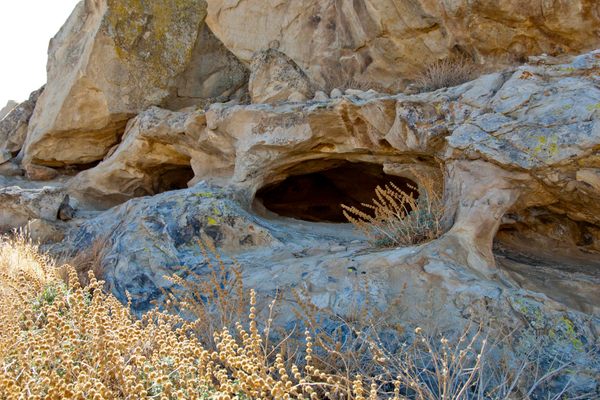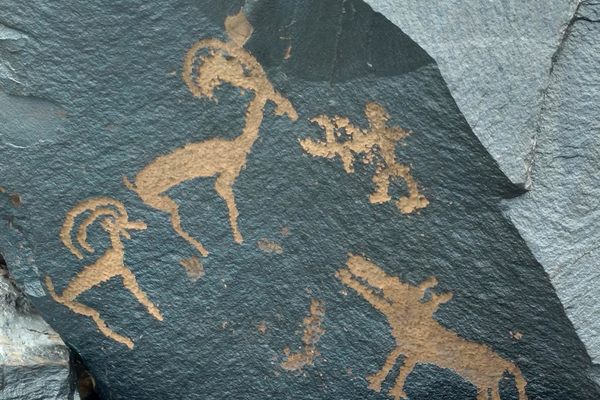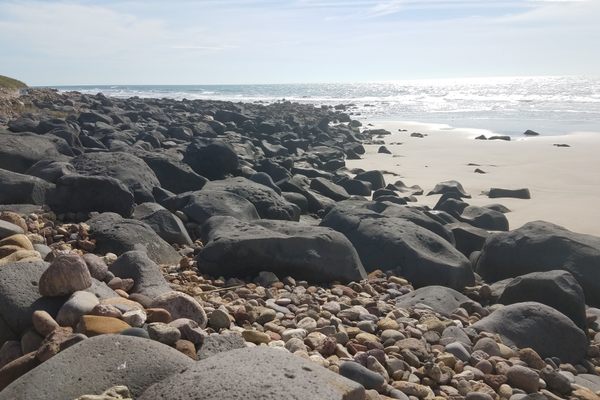About
Depending on the mood of the caretaker (if he’s even there), you might be told that the petroglyphs of Polish are maps drawn by pre-Columbian explorers. Or ayahuasca-induced portals to another dimension. Or… dinosaurs?
Located just outside the hot and humid high-jungle city of Tarapoto, Peru, the petroglyphs of Polish are carved into large grey boulders that sit in the shade of some scattered trees. The various shapes and designs are highlighted with white mineral pigment, contrasting sharply with the grey rocks, dark soil, and vibrant green foliage.
A "caretaker," who sometimes appears drunk or wincingly hungover, might emerge from a nearby shack to provide some background details. Depending on his current condition, he'll either read out some official theories about the site as provided by a local university, or he’ll start to freestyle.
If it’s the former, you’ll learn that the strange white lines remain an archaeological mystery. Since their discovery in 1966, only a handful of archaeologists have taken anything more than a cursory look at the site. It’s possible the petroglyphs were created by the Chachapoyas culture as they explored further east from their territory surrounding the citadel of Kueláp some 100 miles to the west. Alternatively, and perhaps more probably, they were made by local indigenous tribes—the Pocras or Hanan Chancas—who inhabited the area.
The largest and most complex of all the designs could be a map of the region showing rivers, settlements, and trails. In which case, it could shed significant light on this area of Peru and the local tribes—or perhaps contemporary indigenous explorers —who inhabited or passed through this region.
Other petroglyphs are obvious representations of local fauna including snakes and birds. But many defy simple identification. Considering the historic as well as contemporary use of ayahuasca in the region, some symbols might have been inspired by ayahuasca-induced visions.
And what if the bleary-eyed caretaker starts to wing it? Well, he might tell you the dog or monkey petroglyph is actually a dinosaur, which would complicate matters somewhat. And that those other designs represent extraterrestrial visitors. And that the rock over there was actually a sacrificial altar. And that… well, whatever comes to mind, really.
Related Tags
Know Before You Go
The petroglyphs of Polish are located about 5 miles outside Tarapoto. You can get there independently by mototaxi (rickshaw). Strike a deal with the driver and have him wait for you at the site for the return trip to Tarapoto.
Peru: Machu Picchu & the Last Incan Bridges
Discover Inca Wonders.
Book NowCommunity Contributors
Added By
Published
October 25, 2017




































